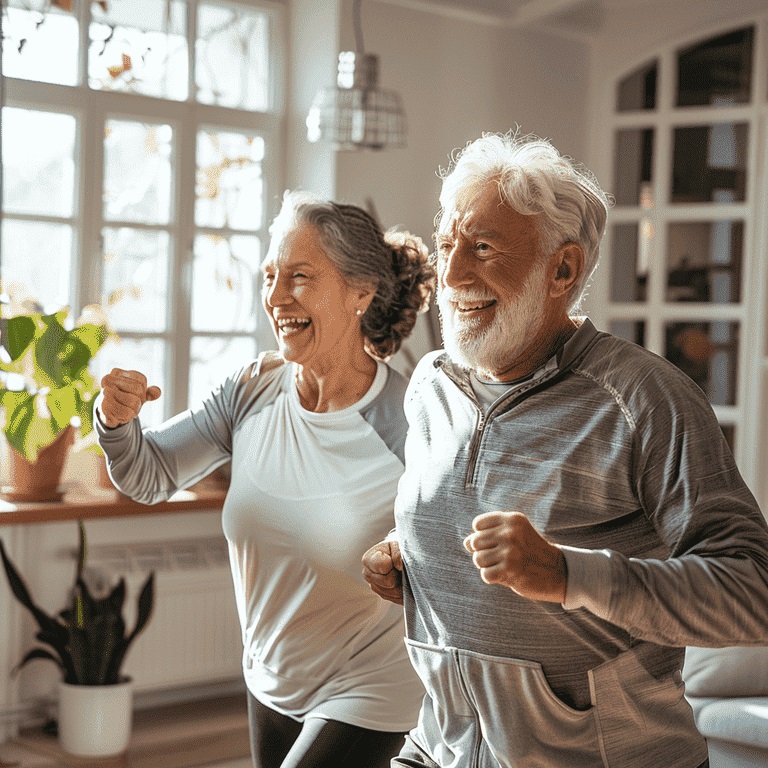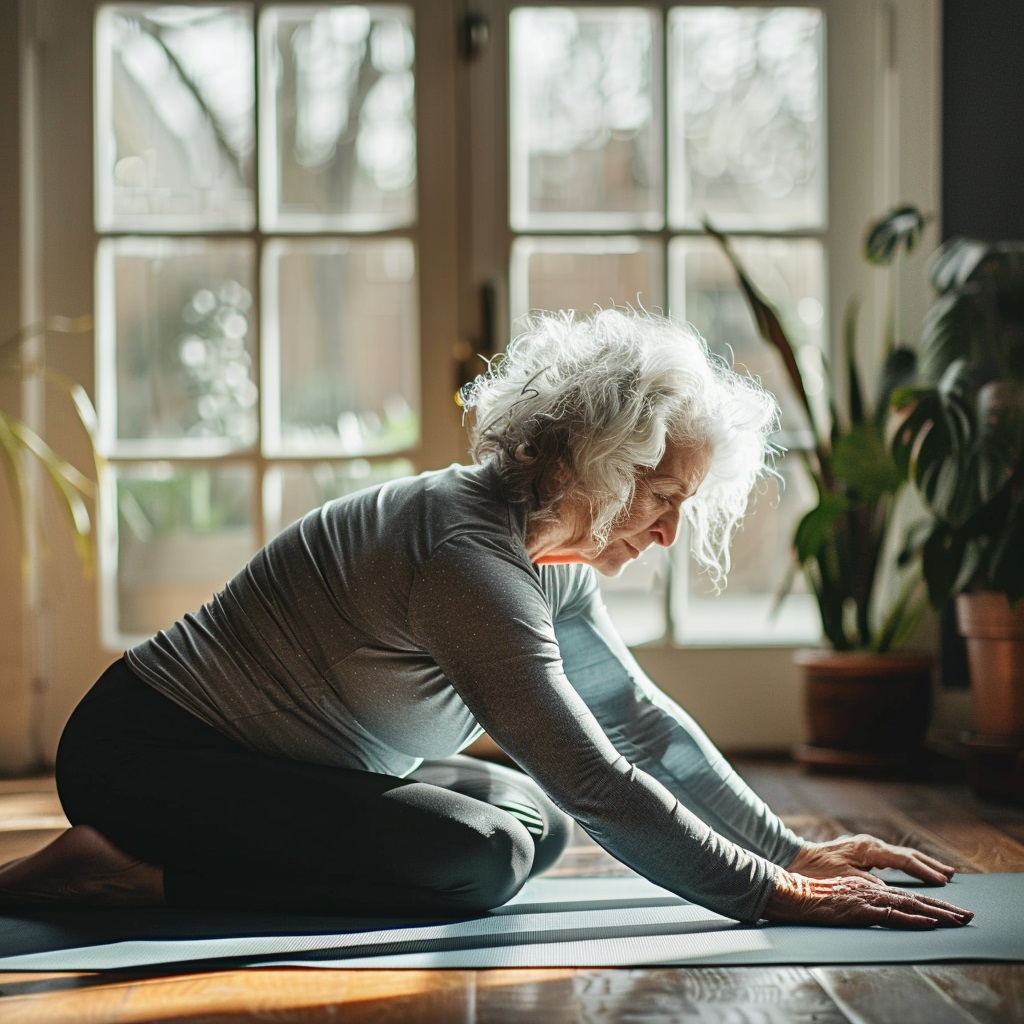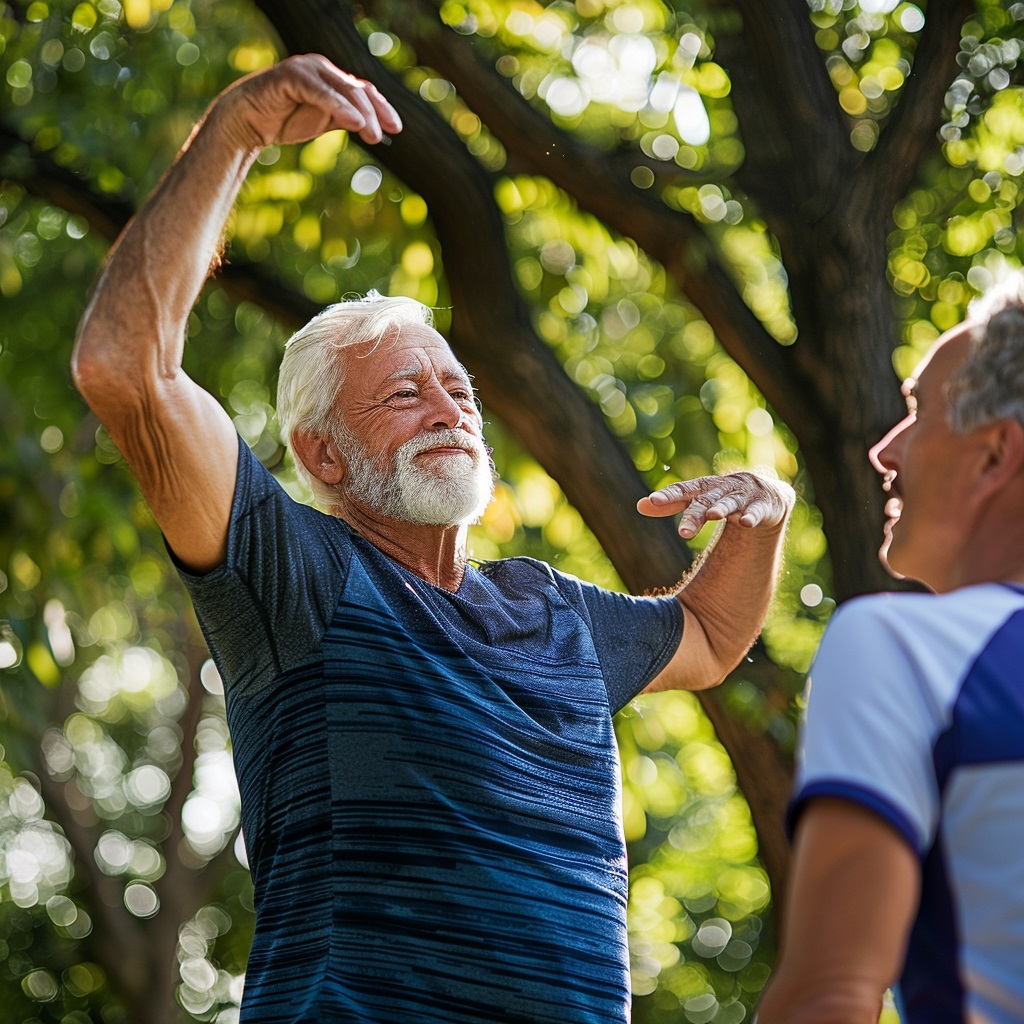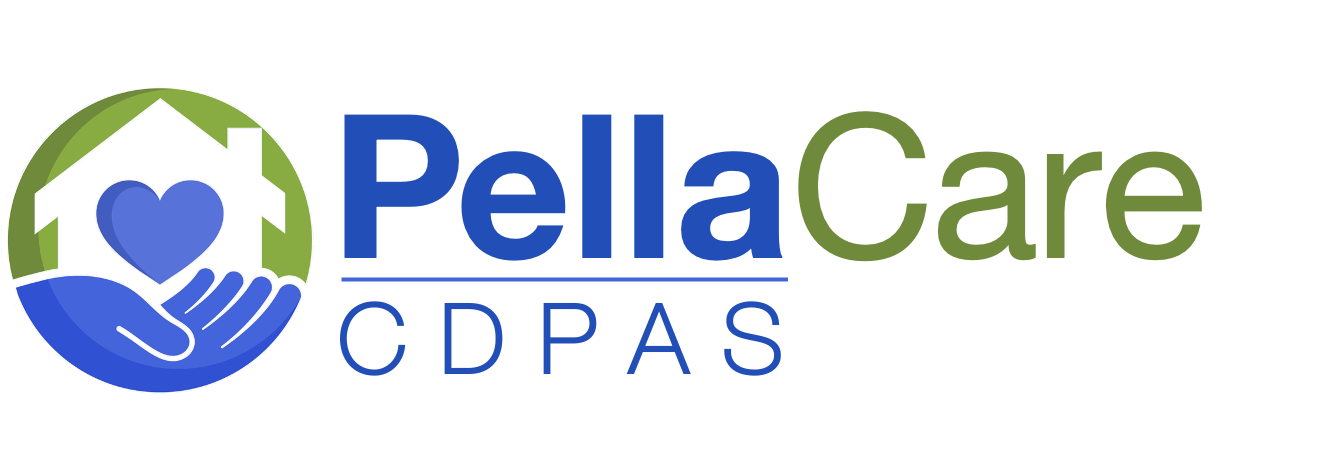Introduction
As we age, maintaining flexibility and mobility becomes increasingly important. Regular stretching can help seniors stay active, reduce pain, and improve their overall quality of life. In this guide, we’ll explore a variety of stretches tailored for seniors, ensuring safety and effectiveness.
The Benefits of Stretching for Seniors
Stretching offers numerous advantages for seniors. Here are some key benefits:
- Improved Flexibility and Range of Motion: Stretching helps keep muscles and joints flexible, reducing stiffness.
- Enhanced Circulation and Blood Flow: Regular stretching increases muscle blood flow.
- Reduced Muscle Stiffness and Soreness: Gentle stretches can alleviate daily aches and pains.
- Prevention of Injuries: Stretching improves balance and coordination, reducing the risk of falls.
- Improved Posture and Balance: Helps maintain proper alignment and reduces the strain on muscles and joints.
- Mental Health Benefits: Stretching can be relaxing and help reduce stress.

A cheerful senior couple prepares for their stretching routine in the comfort of their home.
Consulting With a Healthcare Professional
onsulting With a Healthcare Professional
- Consult a Physician: Always check with your doctor before starting a new exercise routine, especially if you have any health conditions.
- Physical Therapy: If you have a prescribed Physical Therapy regimen, you should always follow the prescribed regimen and not modify it in any way
- Disabled Individuals: Should never begin a stretching routine without consulting their healthcare provider(s) first
Getting Started with Stretching
Before diving into a new stretching routine, consider these important steps:
- Proper Warm-Up Techniques: Begin with a light warm-up, like walking or marching in place, to prepare your muscles.
- Necessary Equipment:
- Yoga mat: For comfort and stability.
- Chair: For seated or balance-assist stretches.
- Resistance bands: For added resistance in stretches.
- Setting Realistic Goals: Start slowly and gradually increase the intensity and duration of your stretches. Track your progress to stay motivated.
Upper Body Stretches
Neck Stretches
Side-to-Side Neck Stretch:
- Sit or stand comfortably.
- Slowly tilt your head towards your right shoulder.
- Hold for 15-30 seconds.
- Repeat on the left side.
Forward and Backward Neck Stretch:
- Sit or stand with a straight back.
- Gently lower your chin towards your chest.
- Hold for 15-30 seconds.
- Slowly tilt your head back, looking up.
- Hold for 15-30 seconds.
Shoulder Stretches
Shoulder Roll:
- Sit or stand with your back straight.
- Roll your shoulders in a circular motion.
- Repeat ten times forward and ten times backward.
Overhead Shoulder Stretch:
- Raise your right arm above your head.
- Bend your elbow and reach down behind your back.
- Use your left hand to push your elbow down gently.
- Hold for 15-30 seconds.
- Repeat with the other arm.
Arm and Wrist Stretches
Bicep Stretch:
- Stand with your feet shoulder-width apart.
- Extend your right arm out to the side, palm facing forward.
- Use your left hand to pull your right arm back gently.
- Hold for 15-30 seconds.
- Repeat with the other arm.
Wrist Flexor Stretch:
- Extend your right arm in front of you, palm facing up.
- Use your left hand to pull your fingers back towards your body gently.
- Hold for 15-30 seconds.
- Repeat with the other hand.
Lower Body Stretches
Hip Stretches
Seated Hip Stretch:
- Sit on a sturdy chair with your feet flat on the ground.
- Cross your right ankle over your left knee.
- Gently press down on your right knee.
- Hold for 15-30 seconds.
- Repeat with the other leg.
Standing Hip Flexor Stretch:
- Stand with your feet hip-width apart.
- Step your right foot back into a lunge position.
- Keep your left knee bent and right leg straight.
- Push your hips forward gently.
- Hold for 15-30 seconds.
- Repeat on the other side.
Leg Stretches
Hamstring Stretch:
- Sit on the edge of a chair with one leg extended straight out.
- Keep your back straight and reach towards your toes.
- Hold for 15-30 seconds.
- Repeat with the other leg.
Quadriceps Stretch:
- Stand behind a chair for balance.
- Bend your right knee and bring your heel towards your buttocks.
- Hold your ankle with your right hand.
- Hold for 15-30 seconds.
- Repeat with the other leg.
Ankle and Foot Stretches
Ankle Circles:
- Sit comfortably with your feet off the ground.
- Rotate your right ankle in a circular motion.
- Do ten circles in each direction.
- Repeat with the other ankle.
Toe Flex and Point:
- Sit comfortably with your feet flat on the ground.
- Lift your right foot and point your toes forward.
- Flex your toes back towards your body.
- Repeat ten times.
- Repeat with the other foot.
Incorporate these stretches into your daily routine to maintain flexibility and enhance your overall well-being. Remember to listen to your body and adjust the intensity as needed. Happy stretching!

A senior woman demonstrates the Cat-Cow stretch to improve spinal flexibility and relieve tension.
Full Body Stretches
Cat-Cow Stretch
- Start on your hands and knees.
- Inhale and arch your back, lifting your head and tailbone towards the ceiling (Cow Pose).
- Exhale and round your back, tucking your chin and tailbone (Cat Pose).
- Repeat for 5-10 breaths.
Benefits:
- Improves spinal flexibility.
- Relieves tension in the back and neck.
Child’s Pose
- Kneel on the floor, sitting back on your heels.
- Extend your arms forward, lowering your forehead to the ground.
- Hold for 15-30 seconds, breathing deeply.
Benefits:
- Stretches the lower back and hips.
- Promotes relaxation and stress relief.
Standing Side Stretch
- Stand with your feet hip-width apart.
- Raise your right arm overhead.
- Lean to the left, feeling a stretch along your right side.
- Hold for 15-30 seconds.
- Repeat on the other side.
Benefits:
- Stretches the sides of your body.
- Improves flexibility in the spine and ribcage.
Seated Stretches
Seated stretches are perfect for seniors who have difficulty standing for long periods. They can be done anywhere there’s a chair.
Seated Forward Bend
- Sit on the edge of a chair with your feet flat on the floor.
- Slowly bend forward at your hips, reaching towards your toes.
- Hold for 15-30 seconds, keeping your back straight.
Benefits:
- Stretches the lower back and hamstrings.
- Improves flexibility in the spine.
Seated Spinal Twist
- Sit tall with your feet flat on the floor.
- Place your right hand on the back of the chair.
- Twist your torso to the right, looking over your shoulder.
- Hold for 15-30 seconds.
- Repeat on the other side.
Benefits:
- Improves spinal flexibility.
- Relieves tension in the back and shoulders.
Seated Hamstring Stretch
- Sit on the edge of a chair with one leg extended straight out.
- Keep your back straight and reach towards your toes.
- Hold for 15-30 seconds.
- Repeat with the other leg.
Benefits:
- Stretches the hamstrings.
- Improves flexibility in the legs.
Standing Stretches
Standing stretches help improve balance and flexibility. If needed, a chair or wall can support you.
Standing Quadriceps Stretch
- Stand behind a chair for balance.
- Bend your right knee and bring your heel towards your buttocks.
- Hold your ankle with your right hand.
- Hold for 15-30 seconds.
- Repeat with the other leg.
Benefits:
- Stretches the quadriceps.
- Improves balance and coordination.
Standing Calf Stretch
- Stand facing a wall with your hands on the wall at shoulder height.
- Step your right foot back, keeping your heel on the ground.
- Bend your left knee slightly, feeling a stretch in your right calf.
- Hold for 15-30 seconds.
- Repeat on the other side.
Benefits:
- Stretches the calves.
- Improves flexibility in the lower legs.
Standing Hamstring Stretch
- Stand with your feet hip-width apart.
- Place your right foot on a low stool or step.
- Keep your back straight and reach towards your toes.
- Hold for 15-30 seconds.
- Repeat with the other leg.
Benefits:
- Stretches the hamstrings.
- Improves flexibility in the legs.
Stretches Using a Chair
Chair-assisted stretches provide stability and support, making them ideal for seniors who may need a bit of extra balance.
Chair-Assisted Side Stretch
- Sit on a chair with your feet flat on the ground.
- Raise your right arm overhead.
- Lean to the left, using the chair for support.
- Hold for 15-30 seconds.
- Repeat on the other side.
Benefits:
- Stretches the sides of your body.
- Provides support and stability.
Chair-Assisted Leg Stretch
- Sit on the edge of a chair.
- Extend your right leg straight out, with your heel on the ground.
- Reach towards your toes, keeping your back straight.
- Hold for 15-30 seconds.
- Repeat with the other leg.
Benefits:
- Stretches the legs.
- Improves flexibility.
Chair-Assisted Back Stretch
- Sit tall in a chair with your feet flat on the floor.
- Place your hands on your lower back.
- Gently arch your back, looking up towards the ceiling.
- Hold for 15-30 seconds.
Benefits:
- Stretches the back.
- Improves posture.

A senior man receives guidance on safe stretching techniques from a supportive friend in a park.
Safety Tips for Stretching
- Listen to Your Body: If a stretch causes pain, stop immediately.
- Avoid Overstretching: Stretch to the point of mild tension, not pain.
- Proper Breathing Techniques: Breathe deeply and steadily. Avoid holding your breath.
- Stay Hydrated: Drink plenty of water before and after stretching.
- Know When to Stop: If you feel dizzy, lightheaded, or in pain, stop and seek medical advice.
Incorporating Stretching into Daily Routine
Making stretching a regular part of your day can be easy and beneficial. Here are some tips:
- Best Time of Day to Stretch: Stretch in the morning to wake up your body or in the evening to relax before bed.
- Creating a Balanced Routine: Combine stretching with other forms of exercise, such as walking or swimming.
- Tips for Staying Motivated and Consistent:
- Set reminders to stretch.
- Stretch with a friend or group.
- Keep a stretching journal to track progress.
Conclusion
Regular stretching is a simple yet powerful way to enhance your overall well-being. Incorporating these stretches into your daily routine can improve your flexibility, reduce pain, and stay active. Remember always to prioritize safety and listen to your body. Happy stretching!
FAQS
How long should each stretching session last?
A stretching session can last 10 to 30 minutes, depending on your schedule and fitness level. Aim to spend about 15-30 seconds on each stretch, repeating each one 2-3 times.
Can stretching replace other forms of exercise?
Stretching is an excellent complement to other forms of exercise but should not replace activities like cardio and strength training. It helps improve flexibility and prevent injuries, making other exercises more effective and safer.
What should I wear while stretching?
Wear comfortable, loose-fitting clothing that allows you to move freely. Avoid anything too tight or restrictive, as it may hinder your ability to perform the stretches correctly.
Is it normal to feel sore after stretching?
Mild soreness can be expected, especially if you’re new to stretching or haven’t done it in a while. However, sharp or persistent pain is abnormal and may indicate overstretching or injury. Always listen to your body and adjust your routine as needed.
How can I make stretching more enjoyable?
Incorporate elements you enjoy, such as calming music, stretching outdoors, or joining a stretching class. Partnering with a friend can also make the experience more enjoyable and motivating.
Are there any specific stretches that can help with arthritis?
Gentle, low-impact stretches can be particularly beneficial for individuals with arthritis. Focus on stretches that target affected areas but always consult your healthcare provider to tailor a routine that suits your needs.
Can stretching help improve my sleep?
Yes, stretching can help relax your muscles and mind, improving your sleep quality. Incorporate gentle stretches into your evening routine to unwind and prepare your body for rest.
What should I do if I experience a cramp while stretching?
If you experience a cramp, stop the stretch immediately and gently massage the cramped muscle. If needed, apply warmth to relax the muscle or cold to numb pain. Ensure you stay hydrated, as dehydration can contribute to cramping.
How often should I stretch each week?
Aim to stretch at least 2-3 times per week, though daily stretching is ideal for the best results. Consistency is critical to maintaining flexibility and reaping the full benefits of stretching.
Can I stretch if I have a chronic condition or injury?
If you have a chronic condition or recent injury, consult your healthcare provider before starting any new stretching routine. They can provide specific recommendations and modifications to ensure your stretches are safe and effective.
What if I can’t perform a stretch precisely as described?
Modifying stretches to suit your flexibility and comfort level is perfectly fine. Use props like chairs, resistance bands, or pillows to assist and support your movements. The goal is to feel a gentle stretch without straining.
Can stretching help with back pain?
Yes, stretching can help alleviate back pain by improving flexibility and reducing muscle tension. Focus on stretches that target the lower back, hamstrings, and hips to support your spine and reduce discomfort.
How can I ensure I’m doing the stretches correctly?
To learn proper techniques, consider working with a physical therapist or attending a senior-focused stretching class. Watching instructional videos or using guides with detailed descriptions and images can also help ensure you’re performing stretches correctly.
Are there any stretches to avoid?
Avoid any stretches that cause pain or discomfort, and be cautious with intense stretches if you have joint issues or other health concerns. Always prioritize gentle, controlled movements and consult your healthcare provider for personalized advice.
Flexibility: The ability of your muscles and joints to move through their full range of motion.
Range of Motion: The extent of movement possible in a joint, usually its capacity to move in different directions.
Circulation: The movement of blood through the body’s blood vessels, delivering oxygen and nutrients to cells and removing waste products.
Muscle Stiffness: A condition where muscles feel tight and difficult to move, often resulting from overuse or lack of activity.
Injuries: Damage to the body’s tissues, which can occur as a result of accidents, overuse, or physical activity.
Posture: The way in which your body is positioned when you are sitting or standing, which affects overall body alignment.
Balance: The ability to maintain a stable and controlled body position during movement or while stationary.
Mental Health: The overall wellness of how you think, regulate your feelings, and behave.
Warm-Up: Activities performed before a workout or stretching session to prepare the body, increase blood flow, and reduce the risk of injury.
Resistance Bands: Elastic bands used for strength training and stretching exercises to add resistance and improve flexibility and strength.
Hamstrings: The muscles located at the back of your thigh that help in bending your knee and extending your hip.
Quadriceps: The large muscle group at the front of your thigh responsible for extending the knee.
Calf Muscles: The muscles located at the back of your lower leg, responsible for movements like standing on your toes and walking.
Hip Flexors: A group of muscles near the hip that allow you to lift your knees and bend at the waist.
Ankle Circles: A stretching exercise where you rotate your ankles in a circular motion to improve flexibility and mobility.
Toe Flex and Point: A stretch involving the toes where you alternate between flexing them back towards the body and pointing them forward.
Cat-Cow Stretch: A yoga pose that involves alternating between arching and rounding the back to improve spinal flexibility and relieve tension.
Child’s Pose: A yoga pose where you kneel and extend your arms forward while sitting back on your heels, promoting relaxation and stretching the lower back.
Seated Forward Bend: A stretch performed while sitting and reaching towards your toes to stretch the lower back and hamstrings.
Seated Spinal Twist: A stretch performed while sitting and twisting the torso to one side, improving spinal flexibility and relieving tension.
Standing Quadriceps Stretch: A stretch where you stand and pull your heel towards your buttocks to stretch the front thigh muscles.
Standing Calf Stretch: A stretch where you stand and extend one leg back while keeping the heel on the ground to stretch the calf muscles.
Standing Hamstring Stretch: A stretch where you place one foot on a raised surface and reach towards your toes to stretch the back of the thigh.
Chair Assisted Stretches: Stretches performed with the support of a chair to provide stability and assist with balance.
Overstretching: Stretching a muscle or joint beyond its capacity, which can lead to injury.
Proper Breathing Techniques: Breathing methods that enhance the effectiveness of stretches by promoting relaxation and oxygen flow to the muscles.
Hydrated: Maintaining adequate fluid levels in the body to support overall health and prevent dehydration.
Cramp: A sudden, involuntary muscle contraction causing severe pain and stiffness.
Chronic Condition: A long-term health condition that requires ongoing management, such as arthritis or diabetes.
Physical Therapist: A healthcare professional specializing in the treatment of musculoskeletal issues through exercises and physical interventions.
Props: Tools like chairs, resistance bands, or pillows used to assist and support stretching exercises.
Lower Back: The area of the back that includes the lumbar spine, often prone to tension and pain.
Alignment: The proper positioning of body parts in relation to each other, ensuring balance and reducing strain.
Call to Action
Are you a resident of New York State and interested in getting paid to care for your elderly loved one? At Pella Care, we provide support and resources to help you become a paid caregiver. Don’t wait to make a positive change in your family’s life. Give us a call today at 718-908-2273 (or 718-908-CARE) for more information and to get started on this rewarding journey. We’re here to help you every step of the way!

Recent Comments